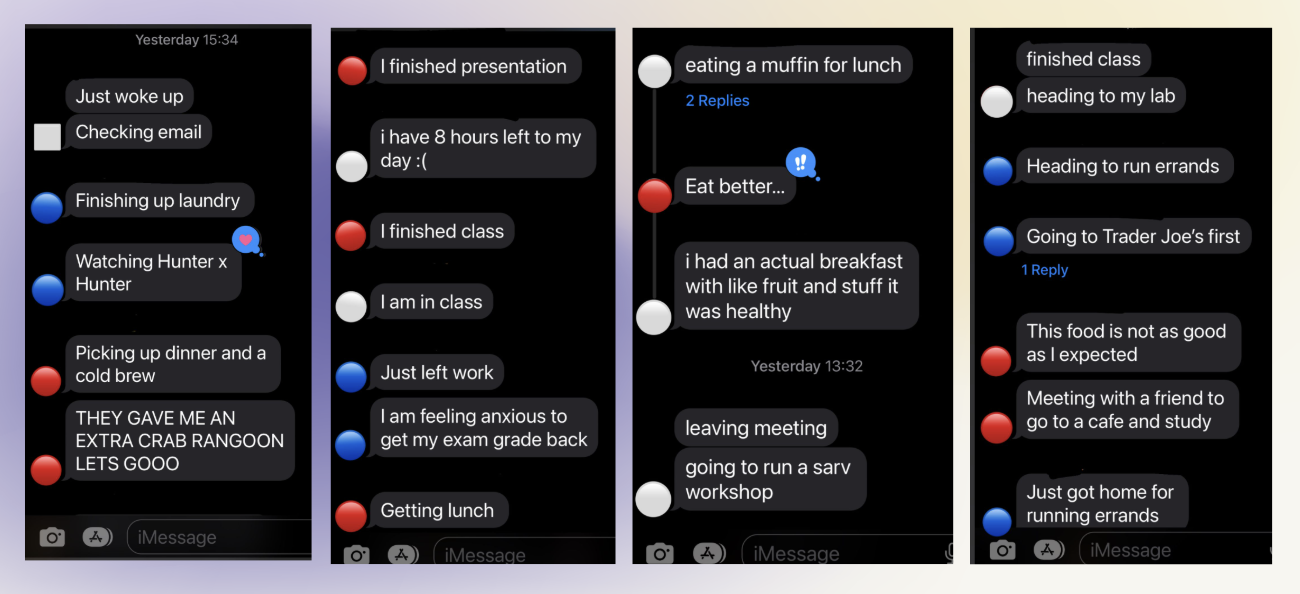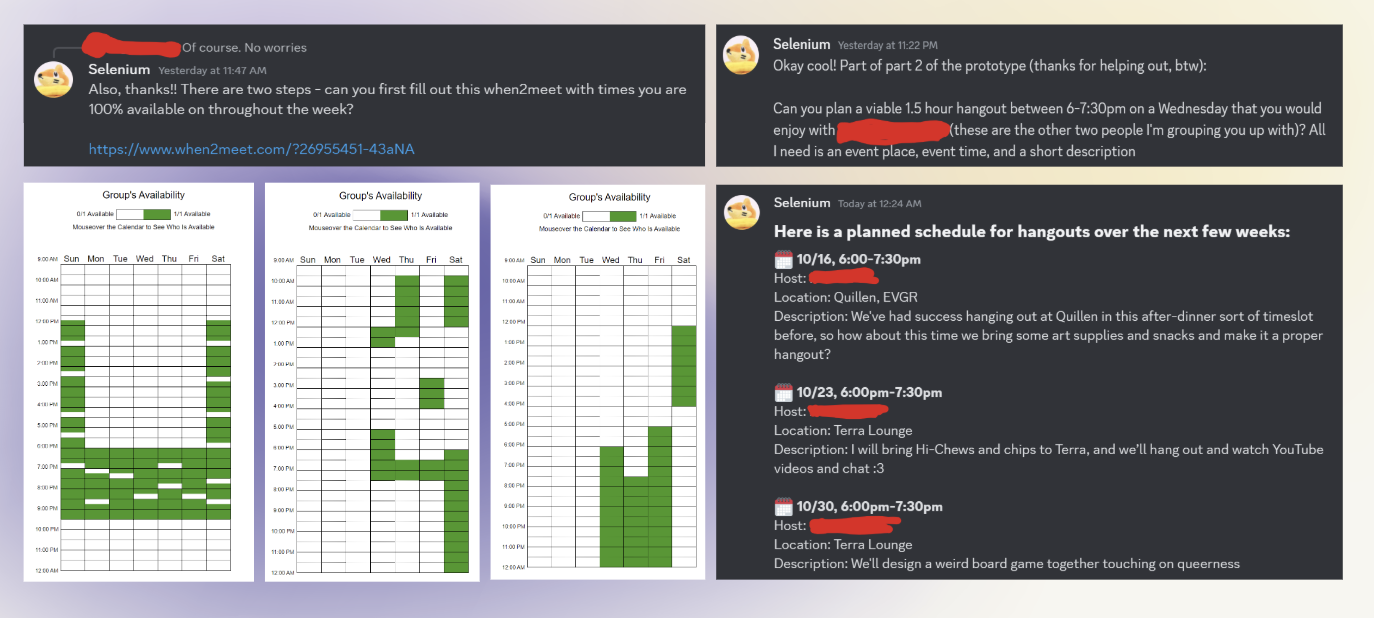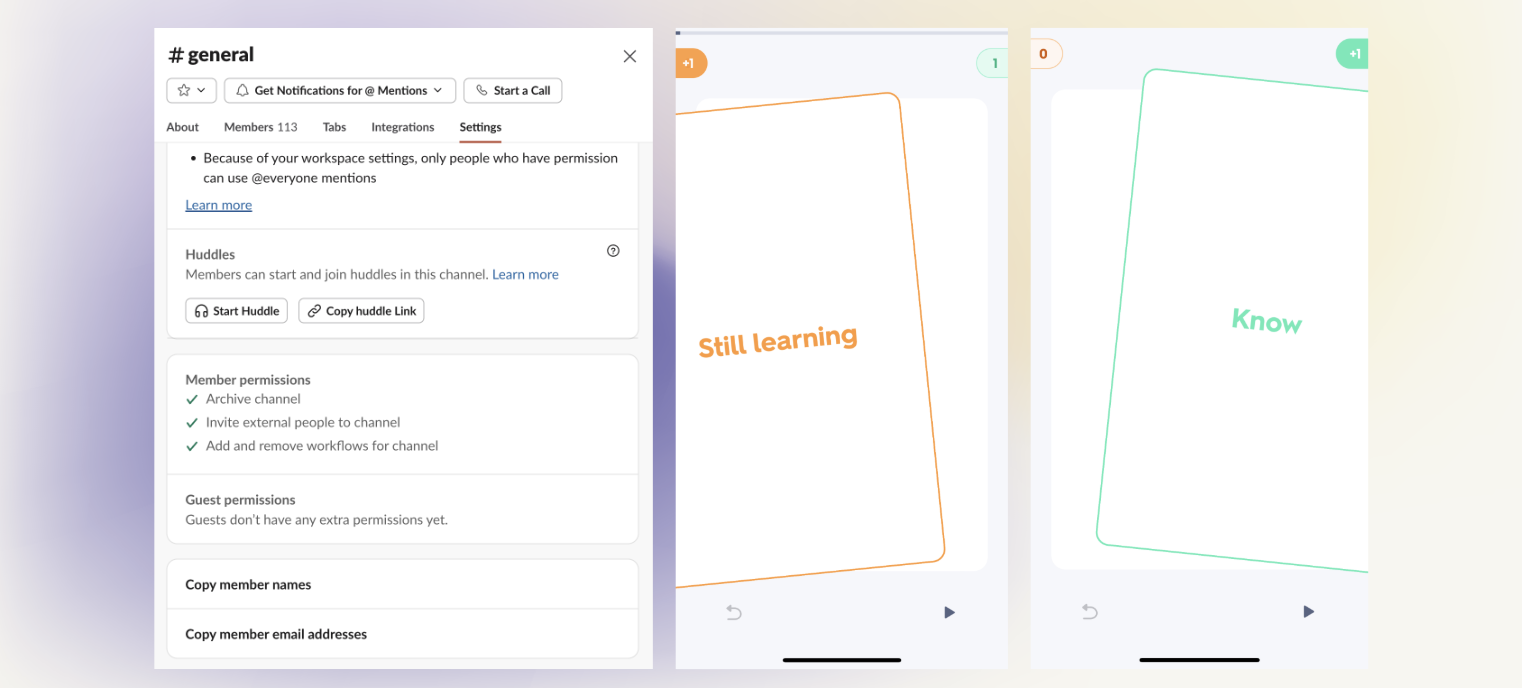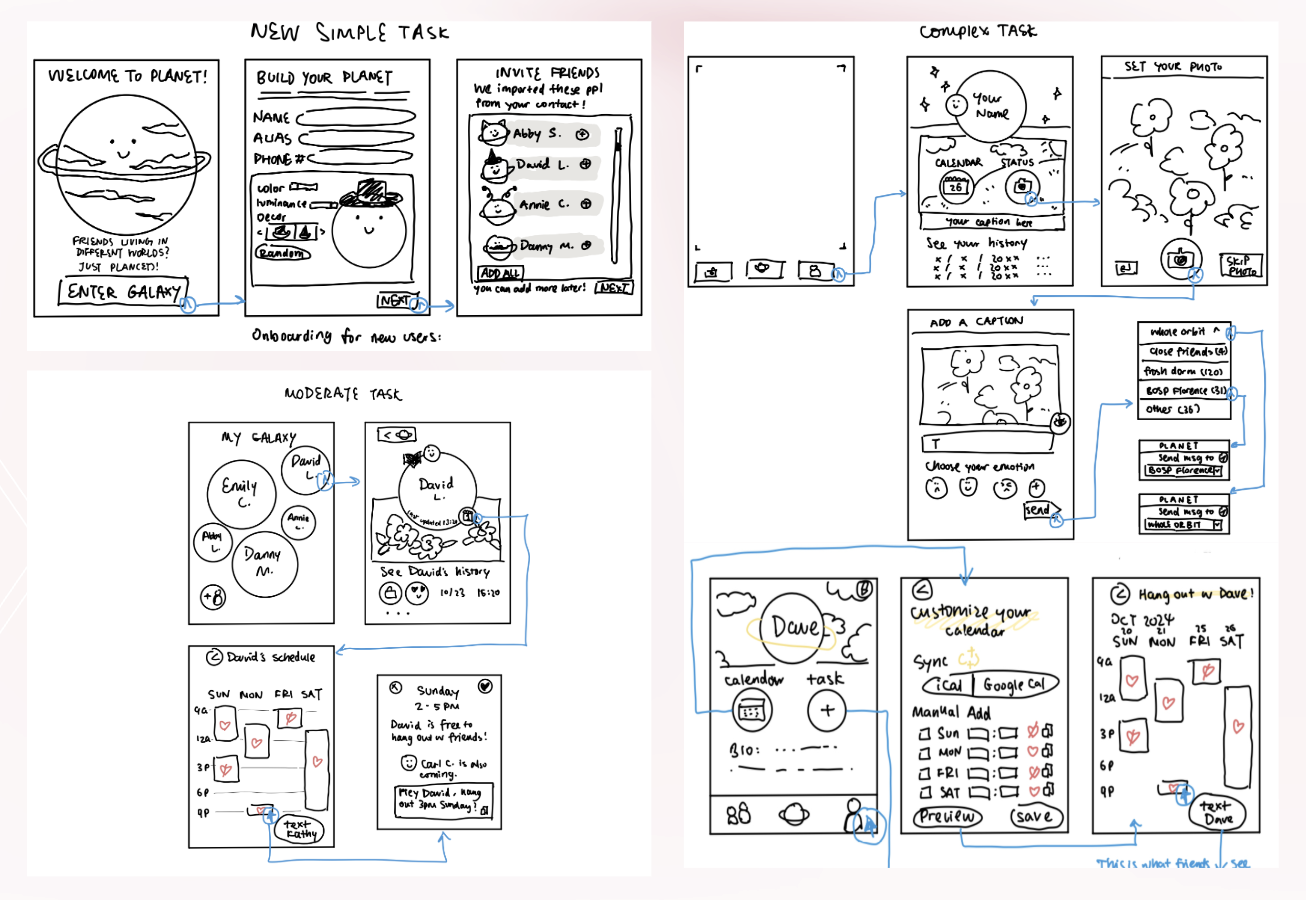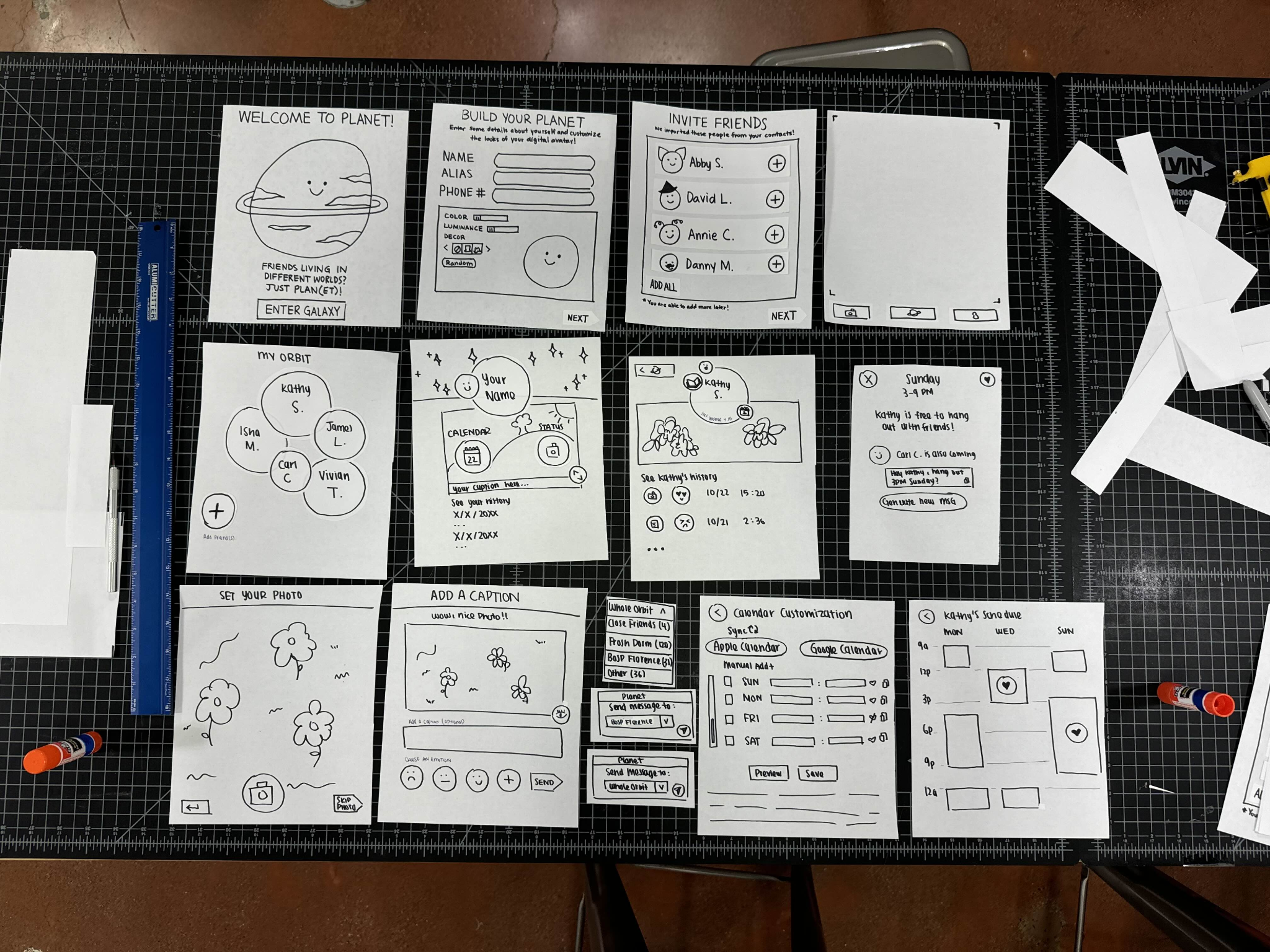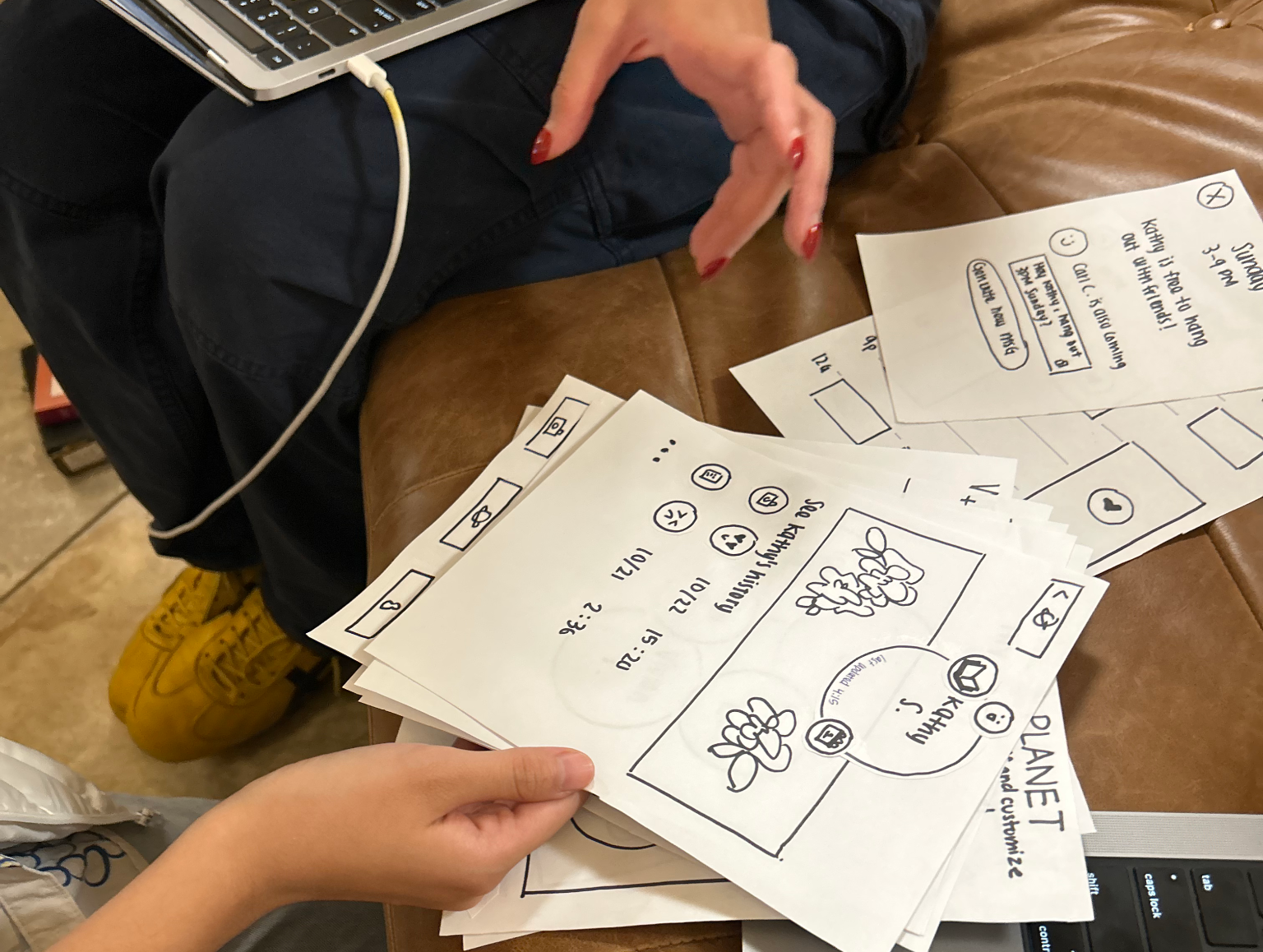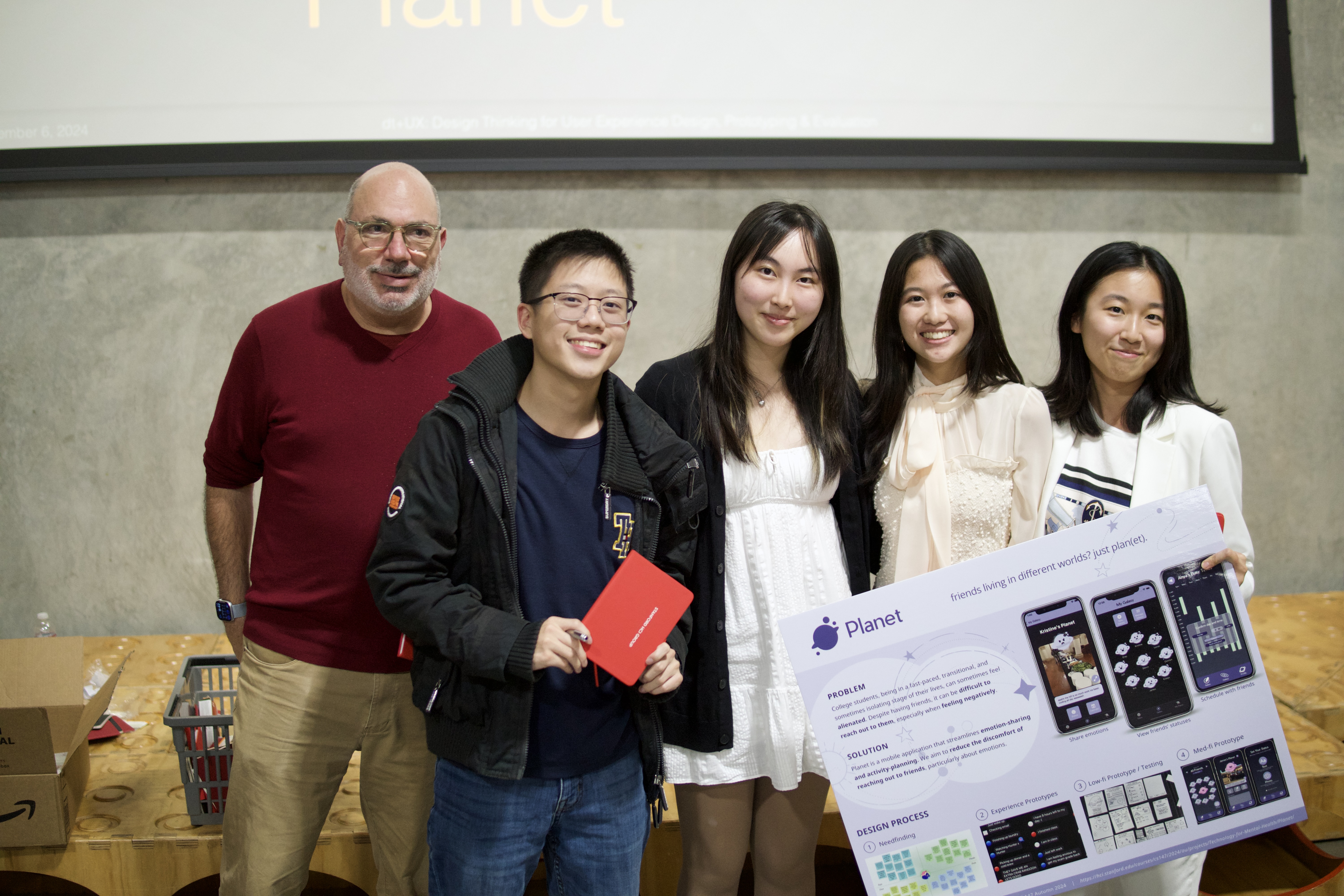Overview
Through an intensive 10-week project as part of CS 147: Introduction to Human-Computer Interaction Design, our team was driven to explore solutions under the studio theme "Technology for Mental Health."
Planet is a mobile app that reimagines social connectivity by providing a real-time, visual representation of friends' emotions and statuses. Whether someone is open to hanging out or could use a supportive gesture, the app makes reaching out effortless and natural. Rooted in the principles of rapid prototyping, cognitive design, and iterative user feedback, Planet fosters a community where building connections feels intuitive and supportive.
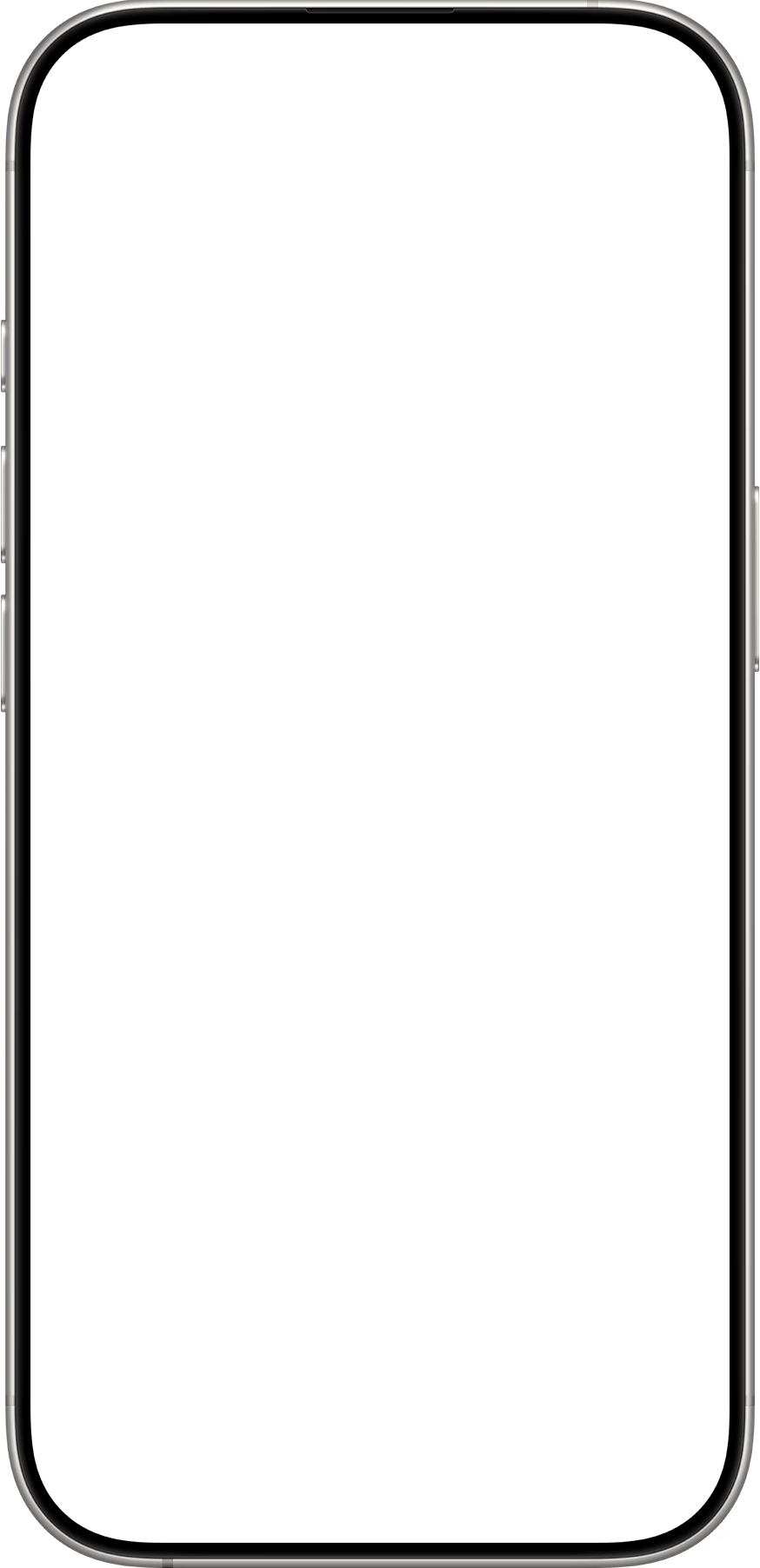
Update Your Emotional Status
Share how you’re feeling through photos and emotes to keep friends in the loop.

Schedule a Hangout with Friends
Find the perfect time to connect without the scheduling hassle.

Organize Friends into Galaxies
Group your circles to keep close connections within easy reach.








